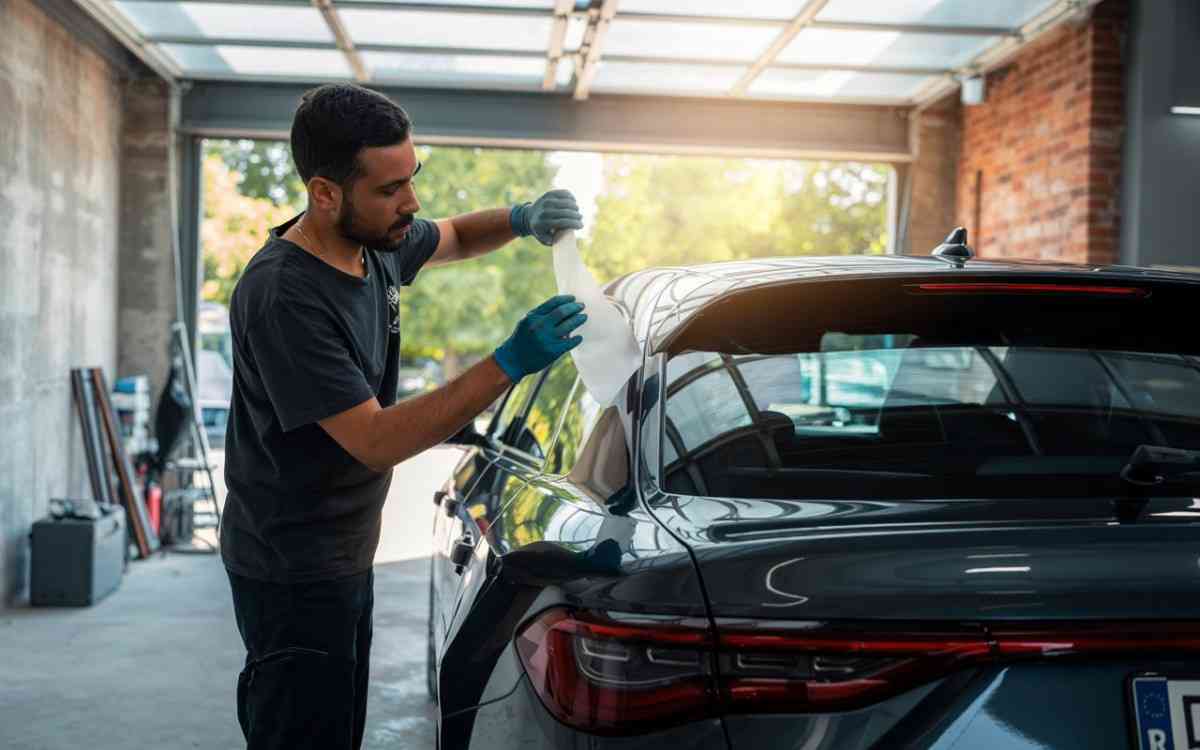When it comes to customizing your car for comfort and style, applying sunfilm is a common choice. It not only enhances the appearance but also offers protection from the sun’s harsh rays. However, before you get your car windows tinted, it’s crucial to understand what’s legal and what’s effective—especially in terms of Visible Light Transmission (VLT) percentage. This blog will walk you through the legal limits, practical considerations, and the rules around rto approved car glass film, car black film rules, car tint rules, and the ideal VLT percentage for car windows.
What is VLT and Why Does It Matters?
VLT (Visible Light Transmission) refers to the amount of visible light that passes through a window. It is expressed as a percentage. The higher the VLT, the more light passes through. For example, a 70% VLT means 70% of visible light can pass through the film and the glass, while a 20% VLT allows only 20% of light through, making it darker.
The VLT percentage is a major factor in determining the legality of car window tinting. Governments regulate the VLT percentage for car windows to ensure driver visibility and road safety. While darker tints might look sleek and stylish, they can impede visibility and create unsafe driving conditions, especially at night or in poor weather. That’s why there are specific VLT percentage limits in place for both safety and legal reasons.
In addition to visible light transmission, car sunfilms also impact other aspects like UV (Ultraviolet) radiation protection and heat reduction. The amount of UV light the film blocks can significantly affect the interior of your car, protecting your seats, dashboard, and other components from fading. Additionally, sunfilms with higher infrared rejection can help in keeping your car’s cabin cooler, reducing the need for air conditioning and potentially improving fuel efficiency.
Legal VLT Requirements in India
In India, car window tinting is regulated by the car tint rules set by the Supreme Court and enforced by the RTO (Regional Transport Office). As per the judgment passed in 2012, the following rules apply:
- Front Windshield: Must have a VLT of 70% or more. This means that the front windshield cannot be tinted darker than a film that allows 70% of light to pass through.
- Rear Windshield and Side Windows: Must have a VLT of 50% or more. This ensures that the windows are not too dark and maintains clear visibility for drivers and passengers.
Any film or glass that does not meet these minimum VLT standards is considered illegal—even if it is factory-fitted. This is where RTO-approved car glass film comes into the picture. These are sunfilms that comply with the government regulations, maintaining the required VLT while still offering protection from UV rays and heat.
This is where rto approved car glass film comes into the picture. These are sunfilms that comply with the government regulations, maintaining the required VLT while still offering protection from UV rays and heat.
Car Black Film Rules: Is Dark Tint Legal?
The term “black film” typically refers to very dark tints with low VLT percentages—often below 20%. According to the current car black film rules, such tints are not allowed, regardless of their purpose or quality. Even if the film is transparent and offers UV protection, if it lowers the VLT below the permissible limit, it’s still illegal.
The reason behind banning such dark tints is primarily safety-related. Darker films reduce visibility, especially in low-light conditions like nighttime driving or during fog, rain, or other inclement weather. This is especially dangerous when driving in busy traffic or on highways, where clear visibility is critical for avoiding accidents.
Enforcement is strict in most cities. Vehicles found violating the car tint rules may be fined, and in some cases, the film may be removed on the spot by traffic police. Repeated offenses can even lead to vehicle registration issues. This not only causes inconvenience but can also have financial repercussions, particularly for those who attempt to circumvent the regulations with darker films.
If you’re looking to enhance your car’s privacy or aesthetic appeal, there are still options available that adhere to the legal limits. You can opt for tints that offer UV and infrared protection, which provide many of the benefits of dark films without compromising safety or violating the law.
Why VLT Compliance Is Important
Here’s why you should stick to rto approved car glass film and not go for darker tints:
- Legal Protection: Avoid penalties and harassment from traffic authorities. A VLT percentage that complies with the law ensures you won’t face fines or issues with law enforcement.
- Safety: High VLT ensures better visibility, reducing the risk of accidents—especially at night or during bad weather. Tints that allow sufficient light through improve the driver’s ability to see and react quickly to their surroundings.
- Insurance Validity: Non-compliance with car tint rules may lead to issues with insurance claims in case of an accident. If you’re involved in an accident and the tint is deemed illegal, your insurance may be invalid, or your claims could be rejected.
- Resale Value: Vehicles with illegal modifications are harder to sell or transfer legally. Potential buyers may be deterred by the risk of inheriting a car with non-compliant window tints. Additionally, the cost and hassle of removing illegal tint may lower the resale value.
Ideal and Effective VLT Percentage for Car Windows
If you’re looking for a balance between sun protection, privacy, and legality, here’s what’s recommended:
- Front Windshield: Use a clear or light sunfilm with 70% VLT. It should offer UV and infrared protection without compromising visibility.
- Side Windows and Rear Windshield: Films with 50% VLT are both legal and effective in reducing glare and heat.
Many brands now offer rto approved car glass film that not only comply with the law but also come with features like UV protection, infrared heat rejection, and glare reduction.
Choosing the Right Sunfilm
When picking a sunfilm, focus on the following features:
- VLT Compliance: Ensure the film specifies the VLT percentage and matches car tint rules.
- UV Protection: Look for films that block 99% of UV rays.
- IR Rejection: Films that block infrared rays can reduce cabin heat significantly.
- Durability: Quality films should last years without peeling or fading.
Stick to well-known brands that clearly label their products as rto approved car glass film and offer a certificate of compliance. These are more likely to pass inspection during road checks.
What Happens if You Violate the Rules?
Using sunfilm that doesn’t meet the required VLT percentage for car windows can lead to:
- Fines ranging from ₹100 to ₹500 or more depending on the state
- Mandatory removal of the film by police on the spot
- Vehicle seizure in repeat or extreme violations
- Trouble during vehicle inspections or registration renewal
Always check your film’s VLT after installation using a light meter or at an authorized RTO facility.
Conclusion
While window tinting can enhance both the comfort and style of your car, it’s essential to stay within the law. Always opt for rto approved car glass film, follow the car tint rules, and avoid violating car black film rules. A VLT percentage for car windows of 70% for the front and 50% for the sides and rear is not just legal—it’s also practical for everyday driving in India’s diverse weather.



